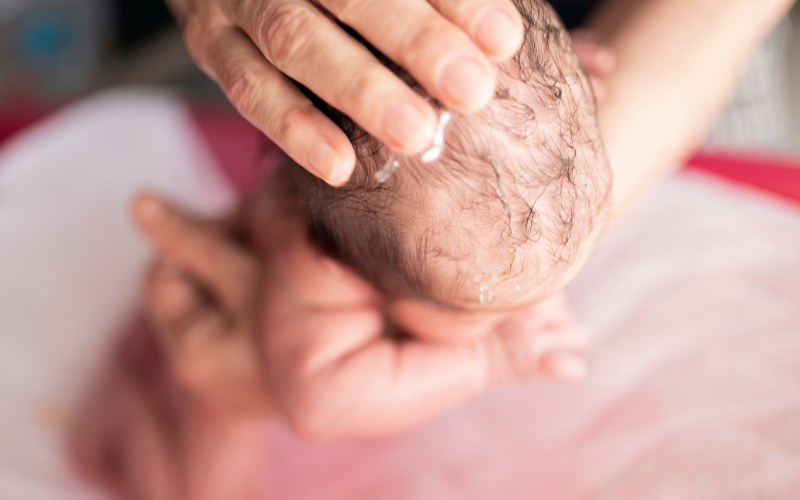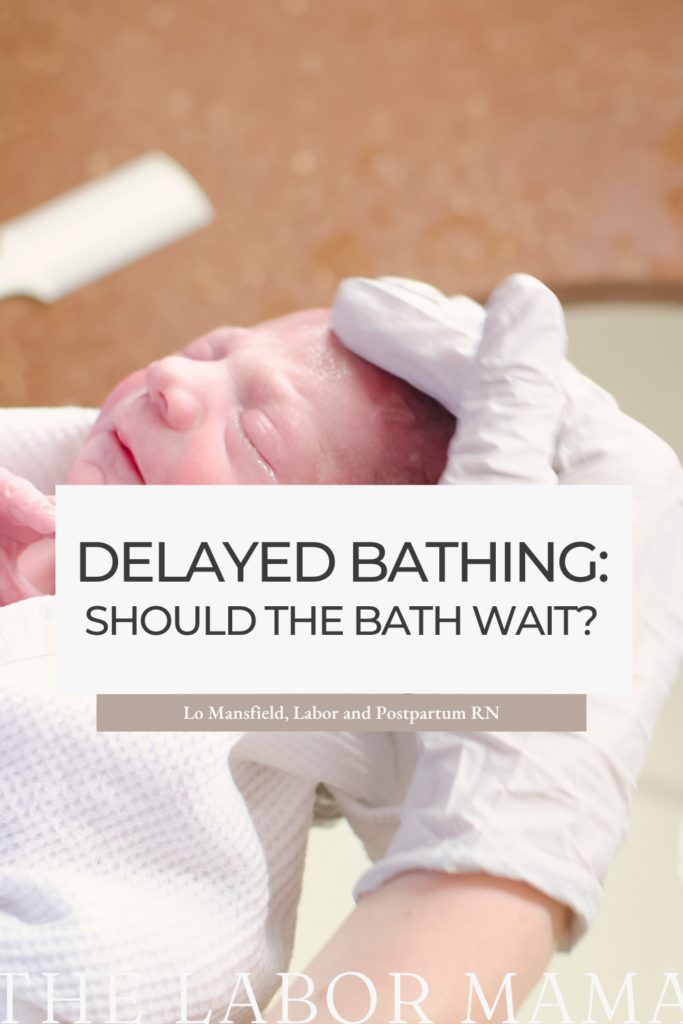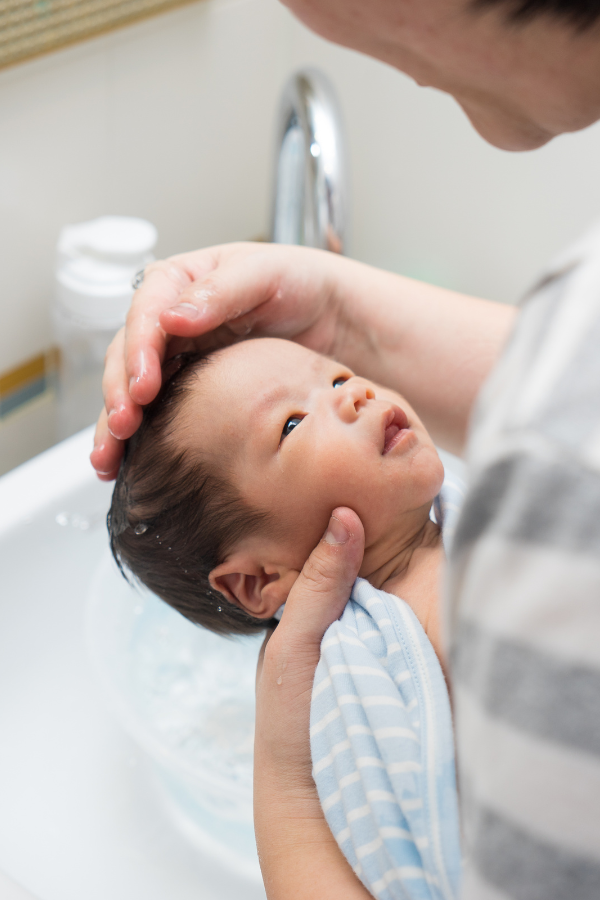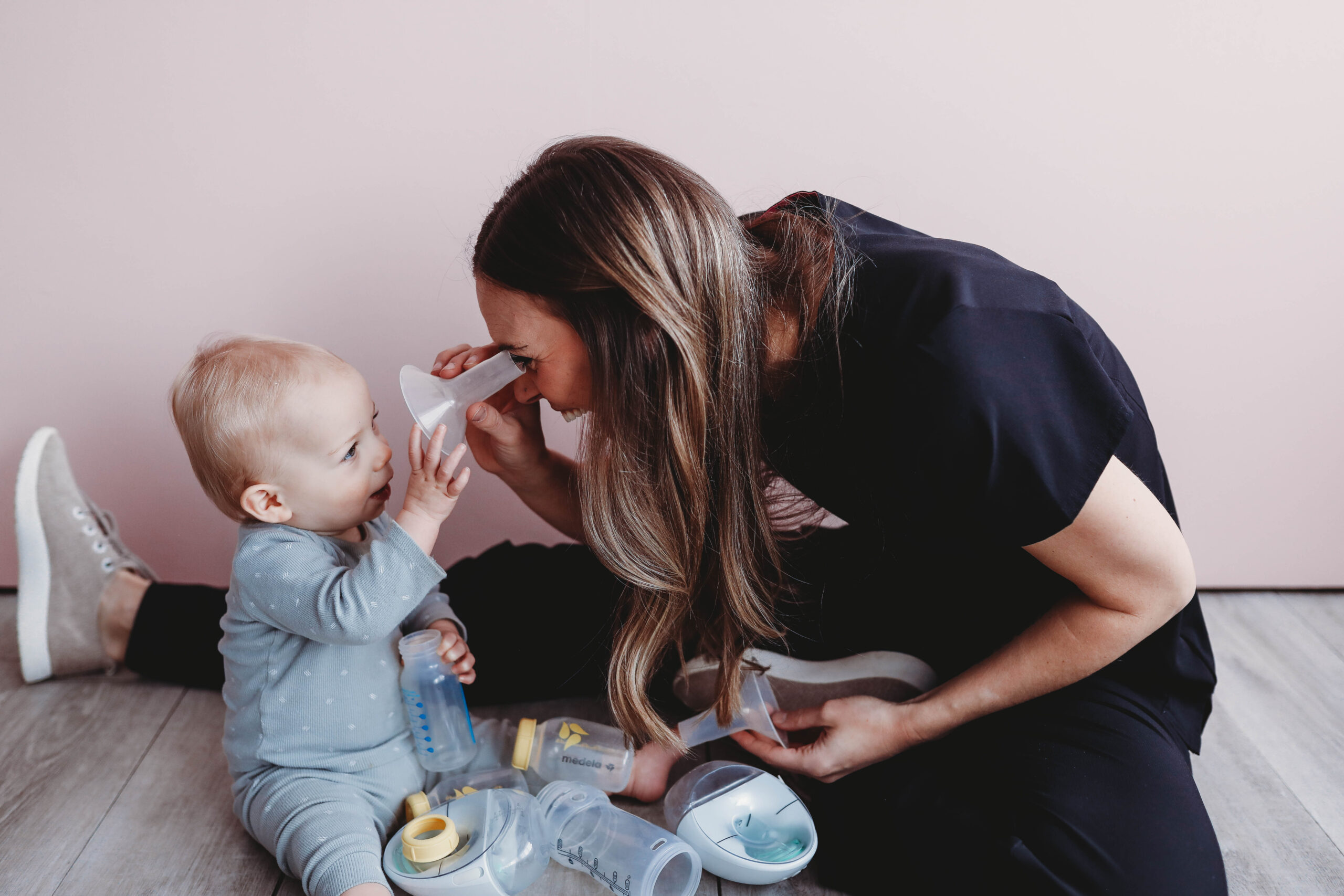Pregnant and researching all things new babies and postpartum? If you are, I’m curious – have you heard of delayed bathing yet? Delayed bathing is all about that first newborn bath. This bath used to be standardly done at the hospital, and usually right in the first few hours after birth. Today, many are choosing to delay that first bath (or skip it for days/weeks). Let’s talk about why that is so you can make an informed choice about it too.
When can you bathe a newborn?
Technically, you can bathe a newborn right away. For a very long time, it has been common practice to do a sponge bath right after birth, often within the first 1-2 hours. However, newer research indicates some pretty great benefits related to the practice of delaying babies’ first baths. Today, The WHO, AWHONN, and other governing bodies recommend delaying the first bath for at least 2-6 hours (or longer).

Delayed bathing benefits
You are likely asking: “Why such a huge change? Why delay a bath for so long?” I think the discussion for delayed bathing benefits really should start with a discussion of vernix. So, let’s start there.
What is vernix?
When a baby is born, they can come out covered in a lot of stuff, including vernix. Vernix is the cheesy, white, fatty coating that you may have seen in pictures or on your own baby. It kind of looks like mayonnaise. Vernix develops in utero, with production peeking in the third trimester, and it is a protector of the skin in the wet, amniotic fluid environment. Typically, there is less vernix the older a baby’s gestational age. So, if you deliver preterm, you may see quite a bit more vernix on their skin than a full term or postdates (overdue) baby would have.
Ok, so what does vernix have to do with delayed bathing in newborns? A lot! If you choose to delay a newborn’s first bath, you are leaving the vernix on their skin. Like I mentioned prior, the vernix offers skin protection and moisturizes. Research also suggests that vernix has some other really cool properties. This includes built in immunity, which can help protect baby from infection, and it can help with temperature regulation.
A delayed bath isn’t only about the vernix. Here are some additional benefits of delaying the first bath:
- Better temperature regulation for baby (less hypothermia)
- Better blood sugar control, as the stress of a bath can drop sugars (less hypoglycemia)
- Positive impacts on bonding and early breastfeeding, as baths may interrupt these things
Delayed bathing and breastfeeding
Let’s narrow in on delayed baths and breastfeeding for a minute. There is quite a bit of research that shows that delaying the bath can have really positive associations with breastfeeding success. A 2019 Cleveland Clinic study found that “Delaying the bath from two hours (the previous standard) to at least 12 hours increased how many moms exclusively breastfed their babies and went home planning to do so.” An additional 2020 study also concluded: “Delaying the newborn bath for 24 hours was associated with an increased likelihood of exclusive breastfeeding at discharge and a decreased incidence of hypothermia and hypoglycemia in healthy newborns.” Temperature regulation, blood sugars, and breastfeeding can all be related, so you can see how delaying the bath could positively impact all three of these outcomes.
A note: I think it’s important to note that there are absolutely times when bathing is necessary, preferred, or culturally demanded. Often, hospitals will require bathing babies whose mothers were GBS+ and untreated with antibiotics. You may also need to bathe earlier if you developed chorioamnionitis (intrauterine infection) during labor. Babies born to HIV+ mothers or mothers with known hepatitis will also need to be bathed.
How long to delay the newborn bath?
How long to delay is totally up to you! Some choose to delay for hours, days, or even weeks! Here are some recommendations from some different governing bodies. Of note, the AAP doesn’t have an official stance on how long to delay. They reference the WHO in their research and recommendations related to the topic.
- The WHO: 24+ hours (minimum of 6)
- AWHONN: 2+ hours (and only if cardiorespiratory stable)
- NICE: No sooner than 1 hour after birth
The takeaway on delayed bathing for newborns
Research shows that delayed baths can have many positive impacts on a newborn’s transition to life and on the mother/baby relationship. In hospitals, it has been common practice to bathe a baby within 2 hours of life. However, newer recommendations from governing bodies suggest delaying the bath for 6-24+ hours. This is an important choice new parents get to make. To help ensure that your baby is bathed when you wish (or not at all), make sure you have clarified your wishes about newborn bathing on your birth plan.
Need a comprehensive birth plan template? You can get mine here.





